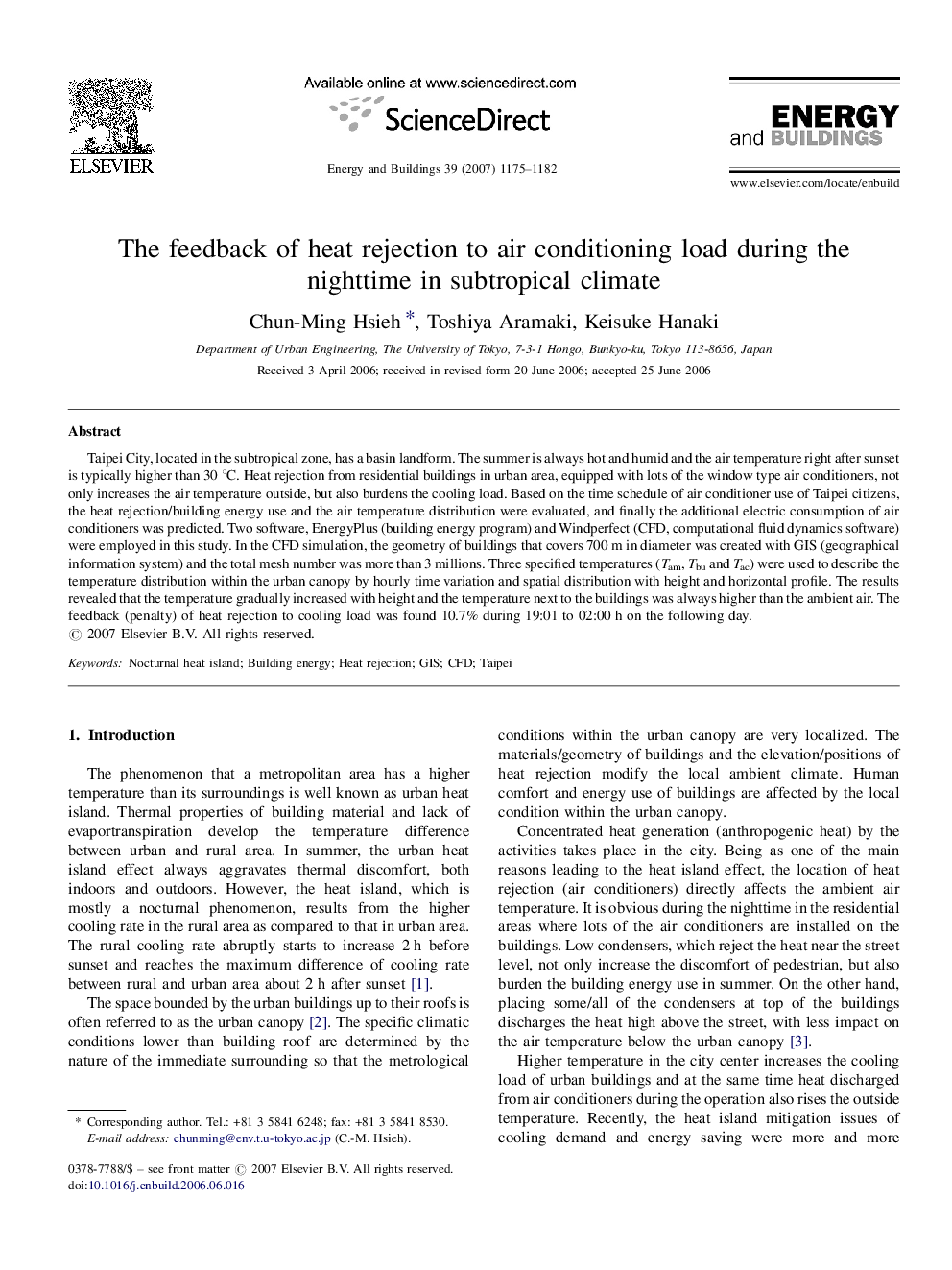| Article ID | Journal | Published Year | Pages | File Type |
|---|---|---|---|---|
| 265262 | Energy and Buildings | 2007 | 8 Pages |
Taipei City, located in the subtropical zone, has a basin landform. The summer is always hot and humid and the air temperature right after sunset is typically higher than 30 °C. Heat rejection from residential buildings in urban area, equipped with lots of the window type air conditioners, not only increases the air temperature outside, but also burdens the cooling load. Based on the time schedule of air conditioner use of Taipei citizens, the heat rejection/building energy use and the air temperature distribution were evaluated, and finally the additional electric consumption of air conditioners was predicted. Two software, EnergyPlus (building energy program) and Windperfect (CFD, computational fluid dynamics software) were employed in this study. In the CFD simulation, the geometry of buildings that covers 700 m in diameter was created with GIS (geographical information system) and the total mesh number was more than 3 millions. Three specified temperatures (Tam, Tbu and Tac) were used to describe the temperature distribution within the urban canopy by hourly time variation and spatial distribution with height and horizontal profile. The results revealed that the temperature gradually increased with height and the temperature next to the buildings was always higher than the ambient air. The feedback (penalty) of heat rejection to cooling load was found 10.7% during 19:01 to 02:00 h on the following day.
